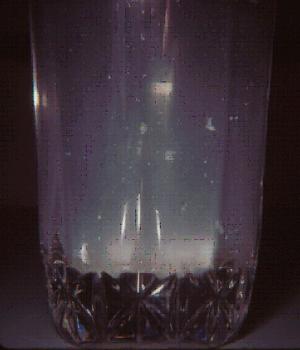Home »
Current Treatments »
Osteoporosis
Osteoporosis
Osteoporosis is defined as a slow and steady loss of calcium from bones severe enough to lose some of the structural integrity of the skeletal system to the point that strength may be compromised. This can result in early fractures, loss of height, or pain even without obvious fractures.
 The bent back of osteoporosis,
The bent back of osteoporosis,
known as kyphosis.
In its full blown form, usually in older women, but sometimes in younger women and even in men, as much as 6 to 8 inches of height can be lost. The spine bows forward (kyphosis) and the entire chest area is forced downward toward the pelvis. Painful rubbing of the ribs upon the pelvic rim can occur. Compression of chest structures makes breathing difficult, makes the abdomen protrude, and causes difficulty with digestion. Because women are living longer they are experiencing more and more osteoporosis fractures. Immobilization or inactivity caused by fractures can lead to other health problems.
Inadequate calcium content is characteristic of the diets of most Americans, especially
adolescents in the peak bone-forming years. Proper calcium intake is important at any time
of life. In general, between 1,200 and 1,500mg of calcium per day should be taken either
by diet or supplement. A single dairy serving (8 ounces of skim milk or a cup of yogurt)
contains about 300 milligrams of calcium.
Estrogen can help prevent OP in women but the risk of side effects means that estrogen
should not be used as a primary means of prevention.
 X-ray of kyphotic spine.
X-ray of kyphotic spine.
Vitamin D and weight-bearing exercise are also essential. Newer treatments include
"designer" estrogens (SERM's), bis-phosphonates (Fosamax™, Actonel™,
Reclast™), and nasal calcitonin. These are available by prescription only and should
be discussed with an expert on an individual basis. The newest member of this group,
Reclast, is given once a year intravenously.
Another new treatment, which became available in 2003, is a recombinant DNA form of
parathyroid hormone, teriparatide (Forteo™). Therapy with this agent requires training,
since it is administered by injection. The Arthritis Center has a patient education
program to make this task easy.
Another new treatment is denusomab (Prolia™), a monoclonal
antibody that suppresses bone resorption. Prolia is given twice a year as a simple
injection under the skin.
Any physician can make the diagnosis of osteoporosis in a woman who has lost significant
height, has a bent back, or shows fractures on an x-ray. Experts must be consulted to make
the diagnosis early enough to administer the appropriate preventative or therapeutic
treatment.
 Quality calcium tablets should dissolve quickly
Quality calcium tablets should dissolve quickly
in a 50/50 mixture of vinegar and water.
The state of the art diagnostic technique for osteoporosis is dual x-ray
absorptiometry (DEXA). This technology delivers miniscule doses of radiation and provides
fast, accurate, painless, and completely reproducible results.
Even more important than
making the diagnosis, however, is the ability of DEXA to follow the progress of treatment.
If a patient is under treatment for osteoporosis and bone densitometry is performed every 6
to 24 months, changes in bone density can be charted. This is useful in deciding when to
change therapy.
The important thing to remember is that osteoporosis can be prevented, treated and in some
cases, reversed. Contact the Arthritis Center for additional information.